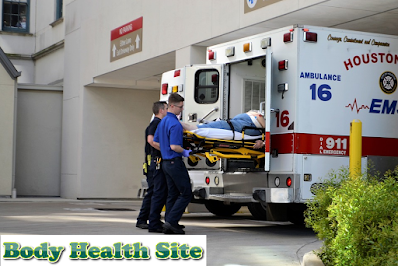Heart Attack Treatment
After a heart attack, in each minute more and more heart tissue loses oxygen and eventually damages and dies. The step to prevent any further heart damage is to restore blood flow immediately.
Used Medicines
The following are medicines to be administered to deal with heart attacks.
- Aspirin. This medicine is used for reducing blood clots. As a result, blood flow continues through the already narrowed vessels.
- Angiotensin-converting enzyme inhibitor (ACE inhibitor). This drug works to widen the blood vessels and lower blood pressure so as to reduce the burden on the heart.
- Thrombolytics. These drugs help dissolve blood clots that block blood flow to the heart. The sooner the patient gets this drug after a heart attack, the chances of survival will increase, as well as less heart tissue damage.
- Antiplatelet drugs. This drug works to prevent the formation of blood clots and to keep the existing clots are not growing bigger.
- Nitroglycerin. This drug works to increase blood flow to the heart by dilating blood vessels.
- Blood-thinning drugs. like heparin, usually given to prevent blood clots in patients from happening again.
- Beta-blockers. This drug serves to slow the heart rate and protect the heart from adrenaline and noradrenaline in the body. These drugs are usually given when the heart can not pump blood throughout the body properly.
- Painkillers (morphine). These drugs may be given to relieve the patient's pain, anxiety, or discomfort.
 |
| Heart Attack Treatment |
Operation and Procedure for Handling Heart Attacks
The following are the surgical procedures that may need to be done to follow up with a heart attack that has occurred.
- Coronary angioplasty. A small catheter or tube with a balloon at its end is inserted into a large blood vessel in the groin or arm. The balloon will be directed to the narrowed portion of the vessel in the heart. Once in the vein, the balloon is inflated to open the blood vessels and also destroy the plaque.
- Heart bypass surgery or another term for coronary artery bypass graft (CABG). This operation is performed when there is a lot of coronary artery blockage. Blood flow to the heart will be made a new path. CABG involves taking blood vessels from other parts of the body, usually taken from the chest or legs, to be used as a new branch.
- Heart transplantation. This is a dead patient's heart replacement procedure with a healthy donor heart. Donors come from deceased people and get approval from the late family to donate their organs.
Recovery After Heart Attack
If you survive after a heart attack, the required recovery period may last for months. This recovery should be done slowly. The main purpose of this recovery process is to restore physical fitness to continue daily activities (cardiac rehabilitation) and reduce the risk of repetition of heart attacks. Patients with heart attacks will be advised to perform mild activity or rest after returning from the hospital. Activities such as short walking distance and up and down stairs several times can be done. Gradually increase physical activity for several weeks. Recovery to the initial condition depends on the patient's general health and also the heart condition.
To find out the heart rehab program, you can find out and ask directly to the hospital in your area. This program is usually done one to two months after discharge from the hospital. This cardiac rehabilitation program is usually accompanied by several types of exercise depending on the choices taken and performed once or twice a week. Often associated with aerobic exercise. This exercise aims to strengthen the heart, lower blood pressure, and improve blood circulation in the body.
Here are the things to keep in mind when undergoing recovery from a heart attack.
- Se*ual activity. This activity can usually be done one to two months after a heart attack. This activity does not increase the risk of repeat heart attacks, but some heart attack medications and anxiety levels of one's emotions can affect s*xual ability. Ask your doctor if you experience it and some medications may be prescribed to overcome it.
- Depression. Anxiety, fear, and trauma are common things that are felt after a heart attack. As a result, feelings of depression and continued grief can haunt the patient for several weeks after discharge from the hospital. Immediately ask the doctor how to overcome it, the emotional condition of a person also influential in the recovery process.
- Back to work. The type of work and health conditions are very influential to determine whether and when you can get back to work after a heart attack. Explain to your doctor about your work and ask about the overall medical condition before you decide to return to work.
- Driving a motor vehicle or engine. Before driving a vehicle or operating a machine, it is advisable to take total rest after a heart attack. As to when you can drive a motor vehicle again, it depends on the severity of your illness. Many people can immediately drive again a week after a heart attack. But in more severe cases, one has to wait until a month before being allowed to drive again. To be clear, seek advice from your doctor.
Read About: Complications of Heart Attack
Related Search:
- heart attack treatment,
- mild heart attack treatment,
- mini heart attack treatment,
- silent heart attack treatment,
- heart attack treatment options,
- stemi heart attack treatment,
- massive heart attack treatment,
- heart attack treatment acronym,
- acronym for heart attack treatment,
- minor heart attack treatment,

Post a Comment for "Heart Attack Treatment"